The Bodhran Drum’s Impact on the Irish Traditional Music
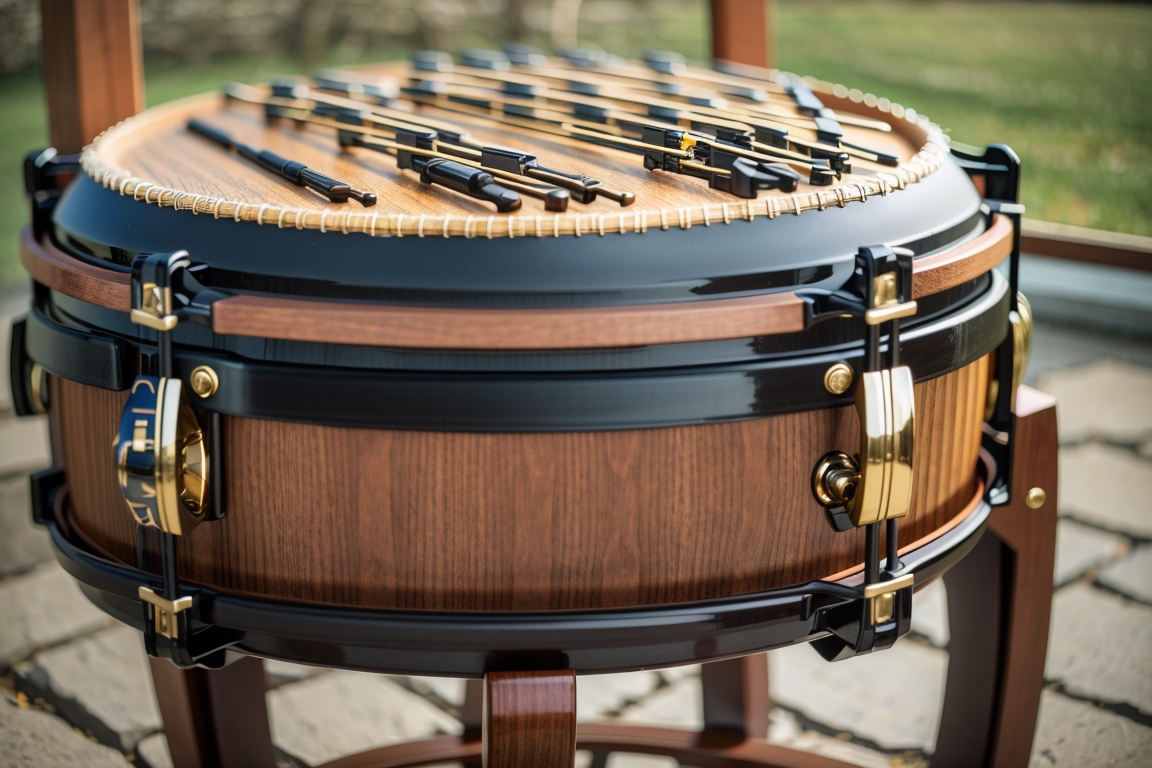
Updated On: April 23, 2024 by Ciaran Connolly
In the realm of Irish traditional music, the bodhrán drum holds a distinctive place. Its deep, resonant beats and rhythmic versatility have not only enriched Irish music but also played a pivotal role in its evolution and popularization globally. This article explores the origins, evolution, and significant impact of the bodhrán drum on Irish traditional music.
Table of Contents
Origins and History of the Bodhran Drum
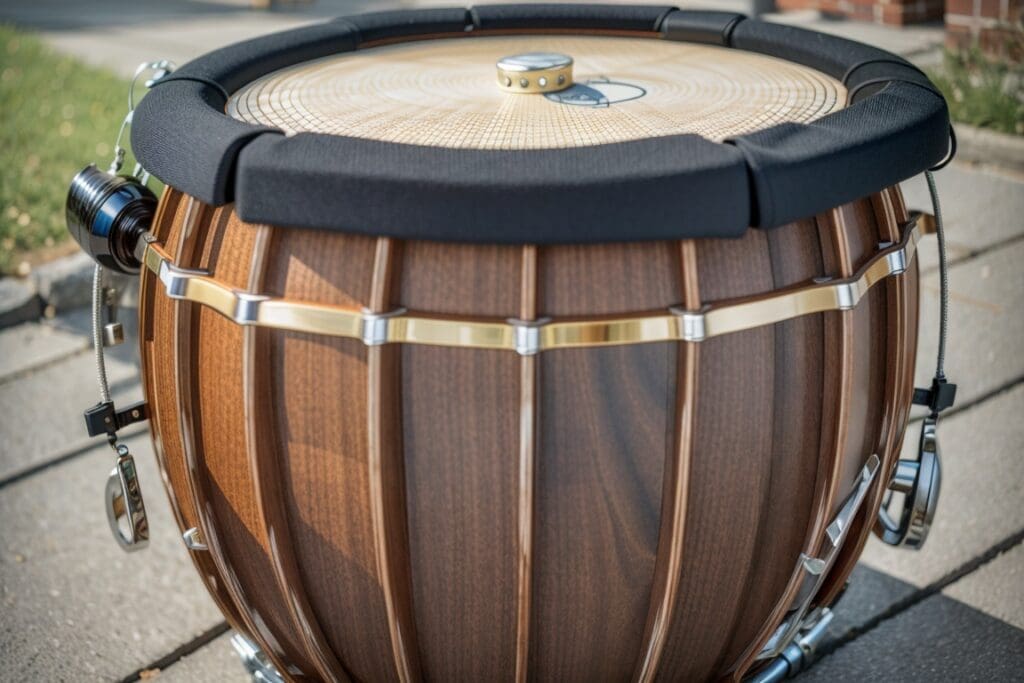
The bodhrán, pronounced as “bow-rawn”, is a frame drum traditionally made from goatskin stretched over a wooden frame. Its origins are shrouded in mystery and subject to various theories. Some trace its roots back to ancient Celtic ceremonies, while others link it to similar frame drums found across the world, from the Middle East to North Africa.
Despite these varied origins, the bodhrán as we know it today is largely a product of the mid-20th century. It was during this period that the drum started gaining prominence in Irish music, transitioning from its use in rural festivities and ceilidhs (traditional Gaelic social gatherings) to becoming a staple of mainstream Irish traditional music.
Evolution of the Bodhrán
Initially, the bodhrán was played with bare hands or with a simple wooden stick. However, as its popularity grew, so did the techniques and tools for playing it. The introduction of the cipín (tipper) — a double-ended drumstick — allowed for more complex rhythms and playing styles.
The 1960s and 1970s were pivotal decades for the bodhrán. Musicians like Seán Ó Riada and Peadar Mercier incorporated the bodhrán into ensemble playing, significantly raising its profile. This era saw the bodhrán evolve from a background rhythm instrument to a more central role in Irish bands, with players experimenting with different playing styles and tunings.
Impact on Irish Traditional Music
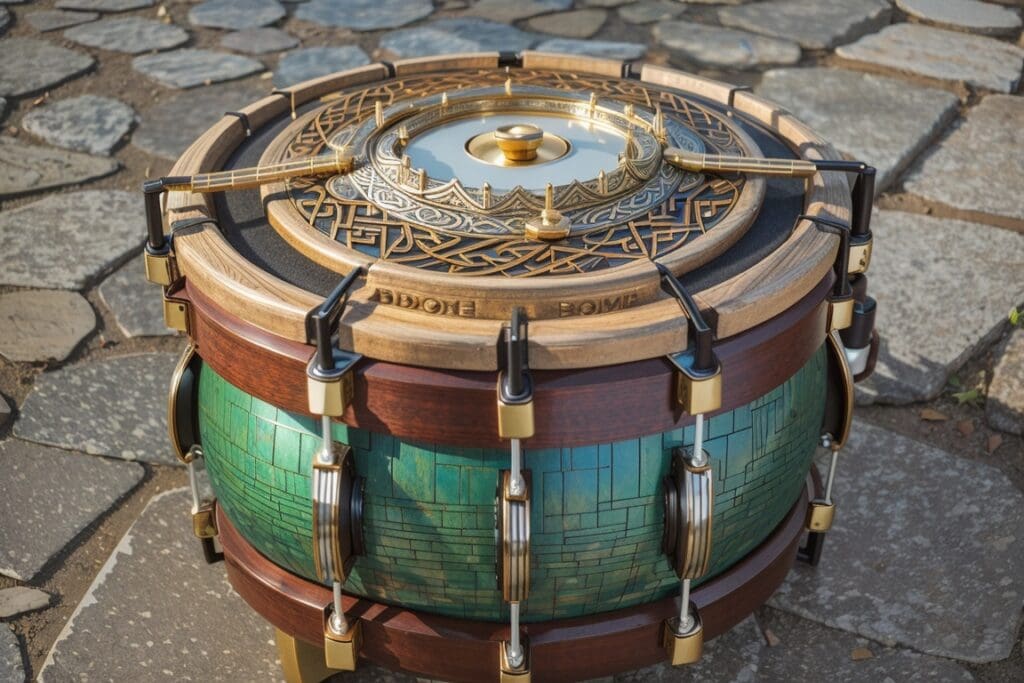
Rhythmic Foundation
The bodhrán’s deep, resonant tone provides a rhythmic foundation that has become synonymous with Irish music. Its ability to produce a range of sounds, from soft whispers to booming beats, allows it to complement the melodic lines of other traditional instruments like the fiddle, tin whistle, and uilleann pipes.
Musical Innovation
The versatility of the bodhrán has encouraged innovation within Irish music. Players like Johnny ‘Ringo’ McDonagh and Dónal Lunny have pushed the boundaries of what can be achieved with the drum, experimenting with different playing styles and incorporating influences from other musical traditions. This innovation has helped keep Irish music dynamic and evolving.
Global Appeal
The bodhrán has played a crucial role in the global appeal of Irish music. Its distinct sound is immediately recognizable and has been a key element in the international success of Irish music groups like The Chieftains, Planxty, and The Bothy Band. The bodhrán’s rhythm resonates across cultures, making Irish music accessible and enjoyable to a global audience.
Cultural Symbol
Beyond its musical impact, the bodhrán has become a symbol of Irish culture and identity. It is often seen in celebrations of Irish heritage around the world, especially on occasions like St. Patrick’s Day. The drum has transcended its musical role to become an icon of Irishness.
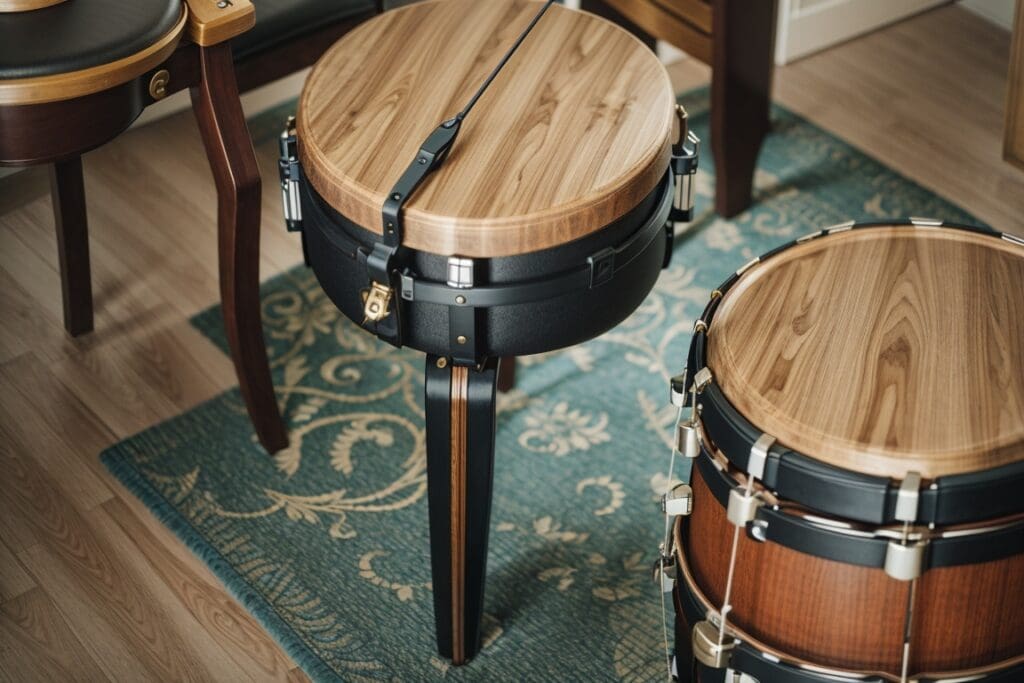
Contemporary Scene
Today, the bodhrán is a fixture in Irish music, from traditional sessions in pubs to large-scale concerts and festivals. Contemporary players continue to innovate, incorporating modern techniques and exploring new musical territories.
Bodhrán in Education
The teaching and learning of the bodhrán have become more formalized, with workshops, classes, and online tutorials making the instrument more accessible than ever. This has resulted in a new generation of bodhrán players who are well-versed in both traditional and contemporary playing styles.
Fusion and Collaboration
The bodhrán is increasingly being used in fusion genres, collaborating with music from around the world. This cross-cultural exchange has not only enriched Irish music but also showcased the versatility of the bodhrán in various musical contexts.
Technological Advancements
Advancements in bodhrán making, such as tunable frames and synthetic skins, have expanded the drum’s sonic capabilities. Players have embraced these innovations as they seek new sounds and greater control over their instruments.
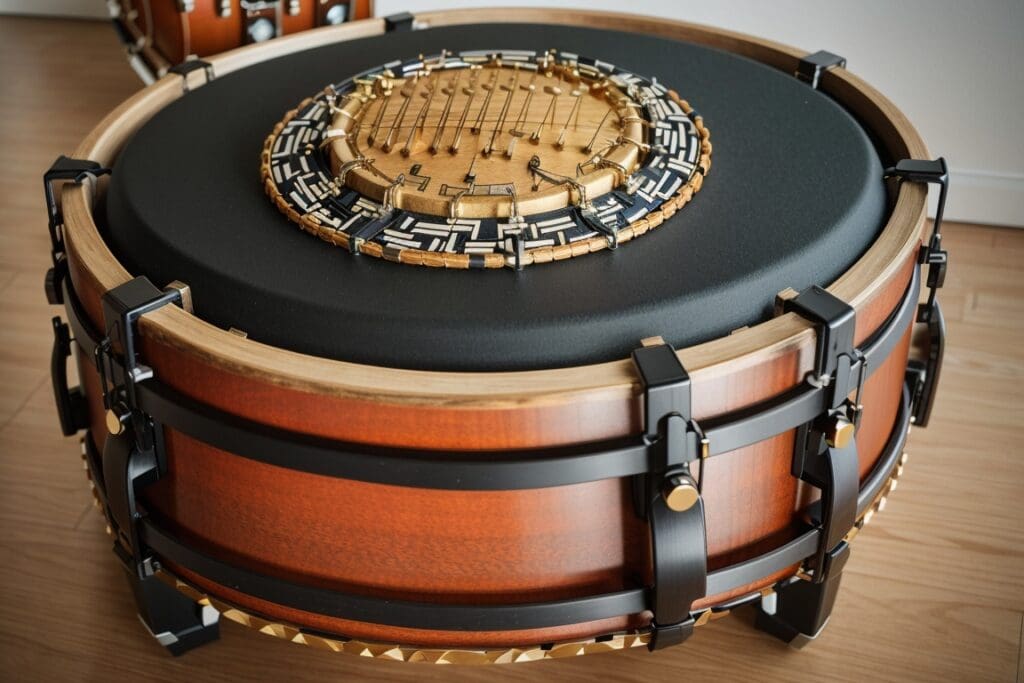
The Distinctiveness of Irish Music
Music has always been an expressive tool for the words of the heart. It can easily illustrate those indescribable emotions that you hardly find the right words for. Besides, the melodies and tunes can help you guess the destination from which they come. Those are some of the reasons that music is mesmerizing; however, there are lots more factors. Ireland has always been popular for the eccentricity of its music. That is because they use not only specific rhythms and tunes but also the instruments they use. The Bodhran drum and tin whistle are two of the main instruments used in Irish folk music. However, they definitely play other instruments that the whole world does, but the bodhran solely belongs to Ireland.
Exploring the Rich Tapestry of Irish Musical Instruments
Irish music, renowned for its rhythmic vitality and melodious charm, owes much of its unique sound to a variety of traditional instruments. These instruments, steeped in history and cultural significance, form the backbone of Irish folk music. Let’s delve into some of the most iconic and beloved Irish musical instruments.
1. Uilleann Pipes
Often considered the national bagpipe of Ireland, the uilleann pipes are recognized for their softer, more melodic tone compared to other types of bagpipes. The name ‘uilleann’ comes from the Irish word for elbow, highlighting the method of inflating the bag using the elbow. A complex instrument with chanters and regulators, it allows for a wide range of notes and is often used to play intricate and emotive melodies.
2. Tin Whistle
The tin whistle, also known as the penny whistle, is a simple yet expressive instrument. Made from metal, it’s played by blowing air into a mouthpiece and covering holes along its length to produce different notes. Its clear, bright sound is a staple in Irish folk tunes, and its affordability and portability have made it a popular choice for musicians of all levels.
3. Fiddle
The fiddle is essentially a violin, but when played in the Irish style, it’s referred to as a fiddle. It’s incredibly versatile, capable of both high-paced jigs and reels, as well as slower, more lyrical airs. The fiddle is central to Irish music, with regional styles influencing how it’s played, from the ornate ornamentation of Donegal to the smooth, melodic style of Clare.
4. Celtic Harp
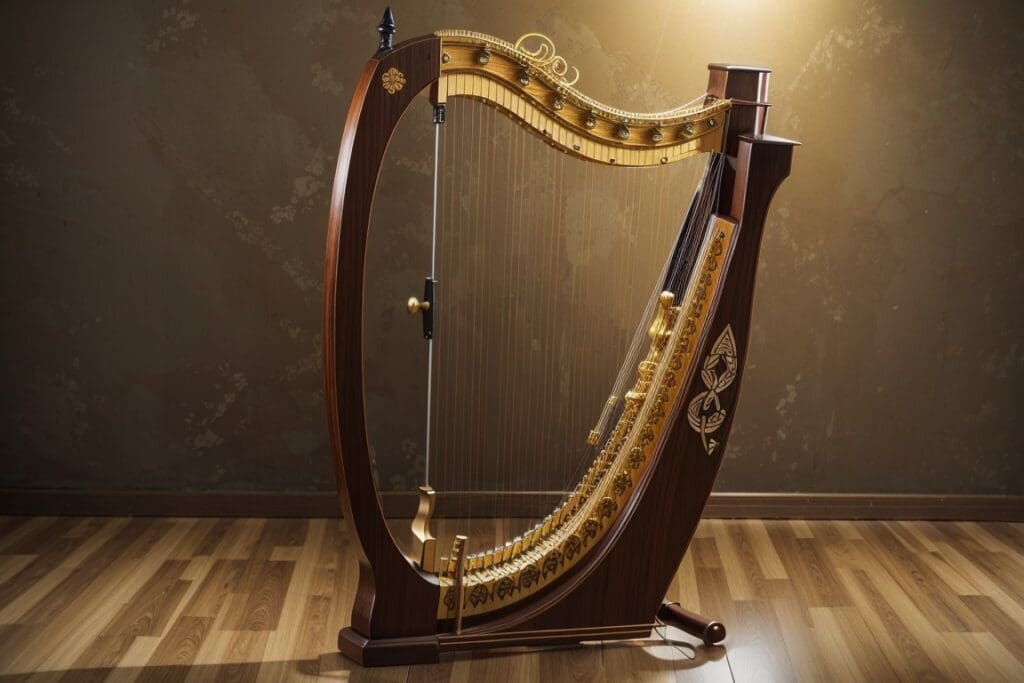
The Celtic harp is one of the oldest instruments in Irish music and an emblem of Irish nationalism. This small, handheld harp has a beautifully delicate sound. Its historical significance and angelic tones make it a revered instrument in the Irish tradition.
5. Bodhrán
As discussed earlier, the bodhrán is a frame drum that provides the rhythmic foundation for much of Irish music. Played with a tipper, it can produce a range of tones, from deep resonating pulses to sharp, snappy beats. The bodhrán’s presence in modern Irish music is a testament to its cultural significance and musical versatility.
6. Button Accordion
The button accordion, especially the diatonic button accordion, is a favourite in Irish music. Different from the piano accordion, it has buttons for both melody and bass. Known for its loud, vibrant sound, the button accordion is used to drive the rhythm in lively dance tunes.
7. Concertina
The concertina, particularly the Anglo-German concertina, is a small, hexagonal accordion. Its distinctive sound and bouncy rhythm make it a beloved instrument for playing jigs, reels, and hornpipes. It has experienced a resurgence in popularity in recent years, becoming a staple in both traditional and contemporary Irish music circles.
8. Irish Flute

The Irish flute, traditionally made from wood, is another key instrument in Irish folk music. It has a warm, rich tone that is well-suited to the traditional music repertoire. Its playing style, often characterized by intricate ornamentation, varies widely across different regions of Ireland.
9. Banjo
The Irish tenor banjo, a four-stringed version of the standard banjo, was adapted from its American counterpart. Tuned differently to suit Irish music, it is commonly used for fast, rhythmic accompaniment in ensembles and has a bright, percussive sound.
10. Irish Bouzouki
Originally a Greek instrument, the Irish bouzouki was adapted for Irish folk music in the late 1960s. It has a larger body and a different tuning than the Greek version. It’s used for both melody and rhythm, providing a rich, resonant sound that complements other traditional instruments.
Conclusion
The bodhrán drum, with its rich history and evolving presence, has profoundly impacted Irish traditional music. Its distinctive sound provides a rhythmic heartbeat that is integral to the genre. The instrument’s journey from rural festivities to global stages symbolizes the dynamism of Irish culture and the unifying power of music.
As Irish traditional music continues to captivate audiences worldwide, the bodhrán remains a key component of its charm and allure. Its ability to adapt, evolve, and integrate with diverse musical traditions ensures that it will continue to be a central feature of Irish music for generations to come. The bodhrán is not just an instrument; it is a storyteller, a cultural ambassador, and a heartbeat that resonates with the soul of Ireland.
Why not check out the history of the Londonderry Air – also known as Oh Danny Boy? One of the most popular songs globally over the past 100 years.






